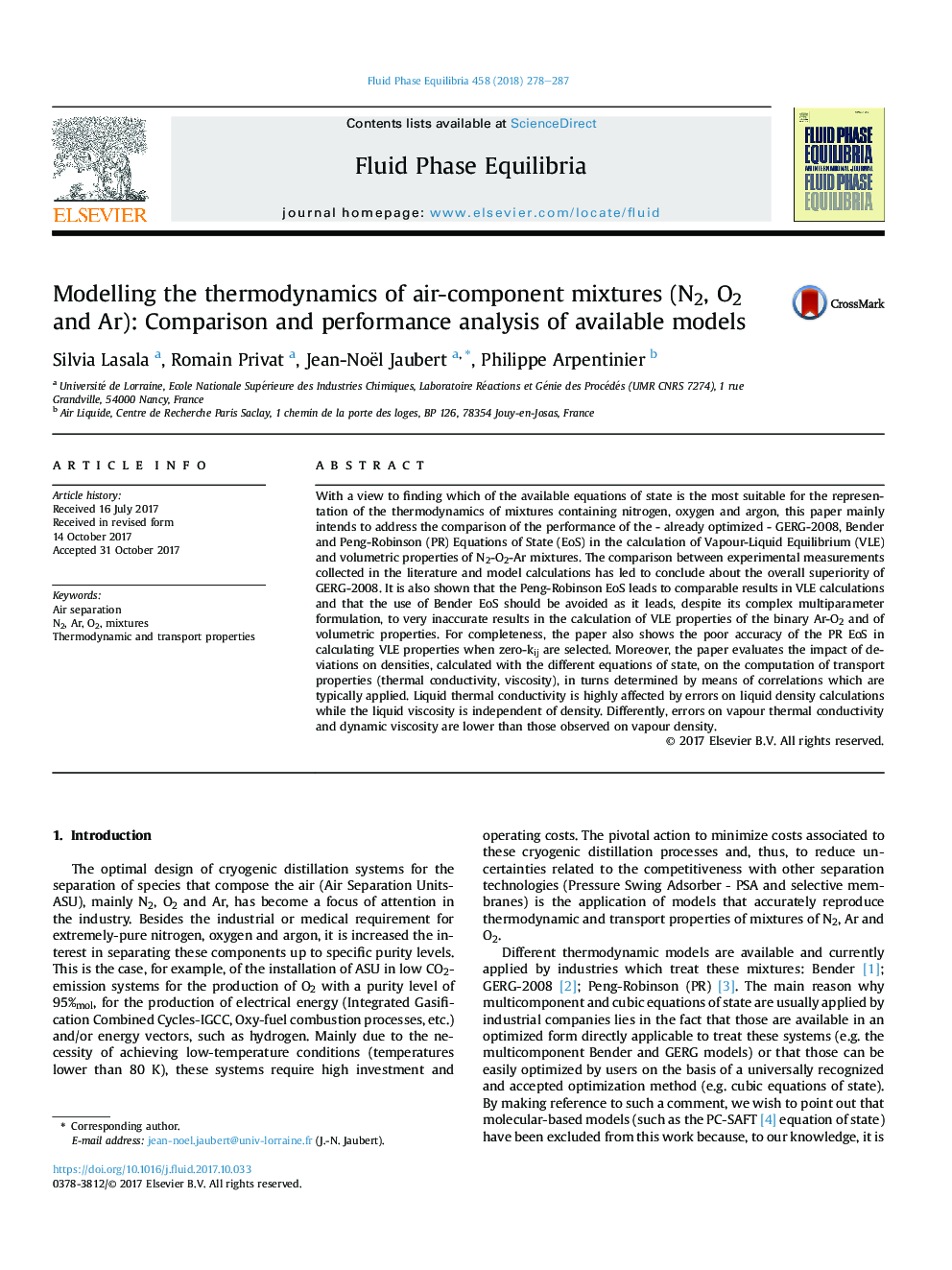| Article ID | Journal | Published Year | Pages | File Type |
|---|---|---|---|---|
| 6619372 | Fluid Phase Equilibria | 2018 | 10 Pages |
Abstract
With a view to finding which of the available equations of state is the most suitable for the representation of the thermodynamics of mixtures containing nitrogen, oxygen and argon, this paper mainly intends to address the comparison of the performance of the - already optimized - GERG-2008, Bender and Peng-Robinson (PR) Equations of State (EoS) in the calculation of Vapour-Liquid Equilibrium (VLE) and volumetric properties of N2-O2-Ar mixtures. The comparison between experimental measurements collected in the literature and model calculations has led to conclude about the overall superiority of GERG-2008. It is also shown that the Peng-Robinson EoS leads to comparable results in VLE calculations and that the use of Bender EoS should be avoided as it leads, despite its complex multiparameter formulation, to very inaccurate results in the calculation of VLE properties of the binary Ar-O2 and of volumetric properties. For completeness, the paper also shows the poor accuracy of the PR EoS in calculating VLE properties when zero-kij are selected. Moreover, the paper evaluates the impact of deviations on densities, calculated with the different equations of state, on the computation of transport properties (thermal conductivity, viscosity), in turns determined by means of correlations which are typically applied. Liquid thermal conductivity is highly affected by errors on liquid density calculations while the liquid viscosity is independent of density. Differently, errors on vapour thermal conductivity and dynamic viscosity are lower than those observed on vapour density.
Related Topics
Physical Sciences and Engineering
Chemical Engineering
Chemical Engineering (General)
Authors
Silvia Lasala, Romain Privat, Jean-Noël Jaubert, Philippe Arpentinier,
